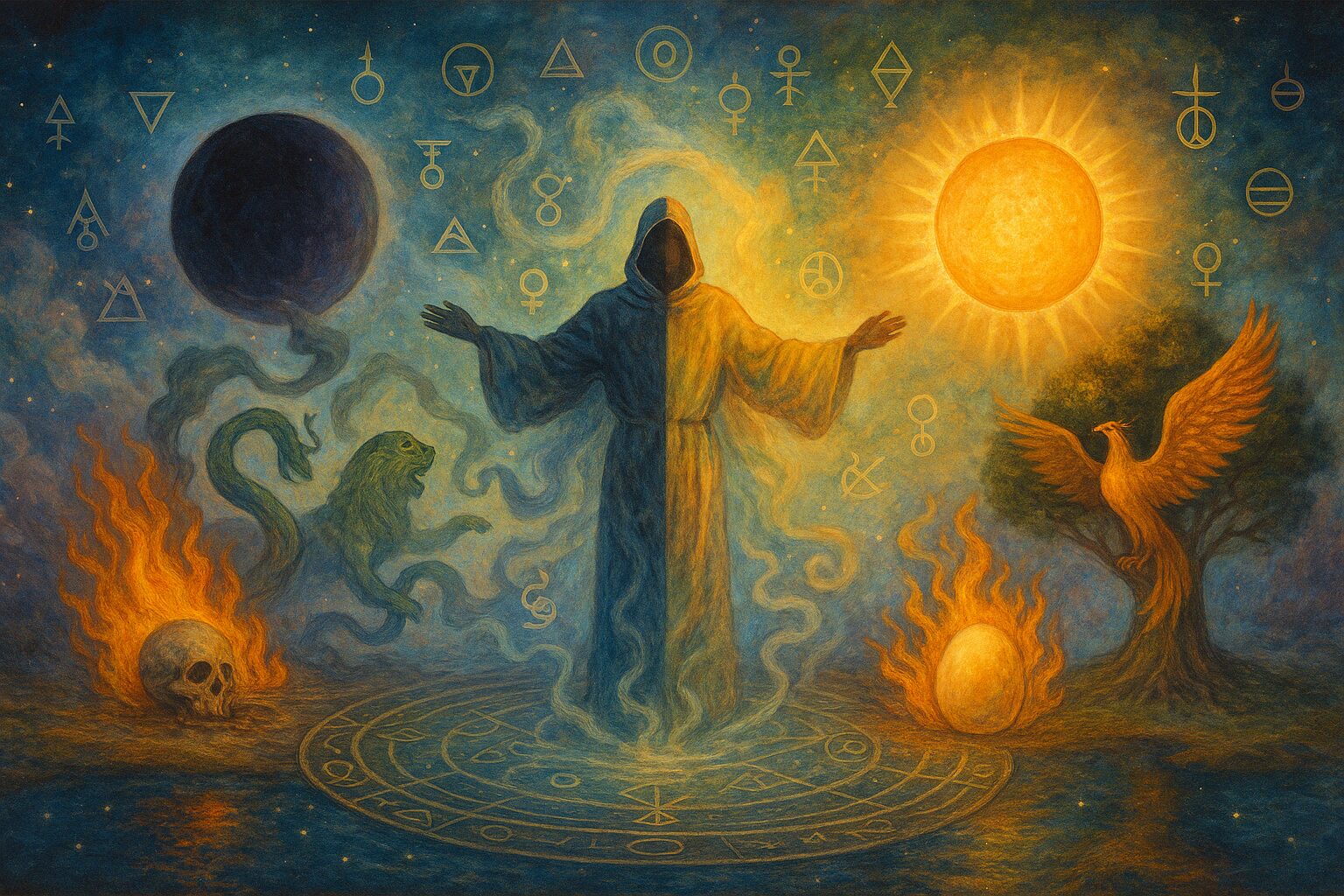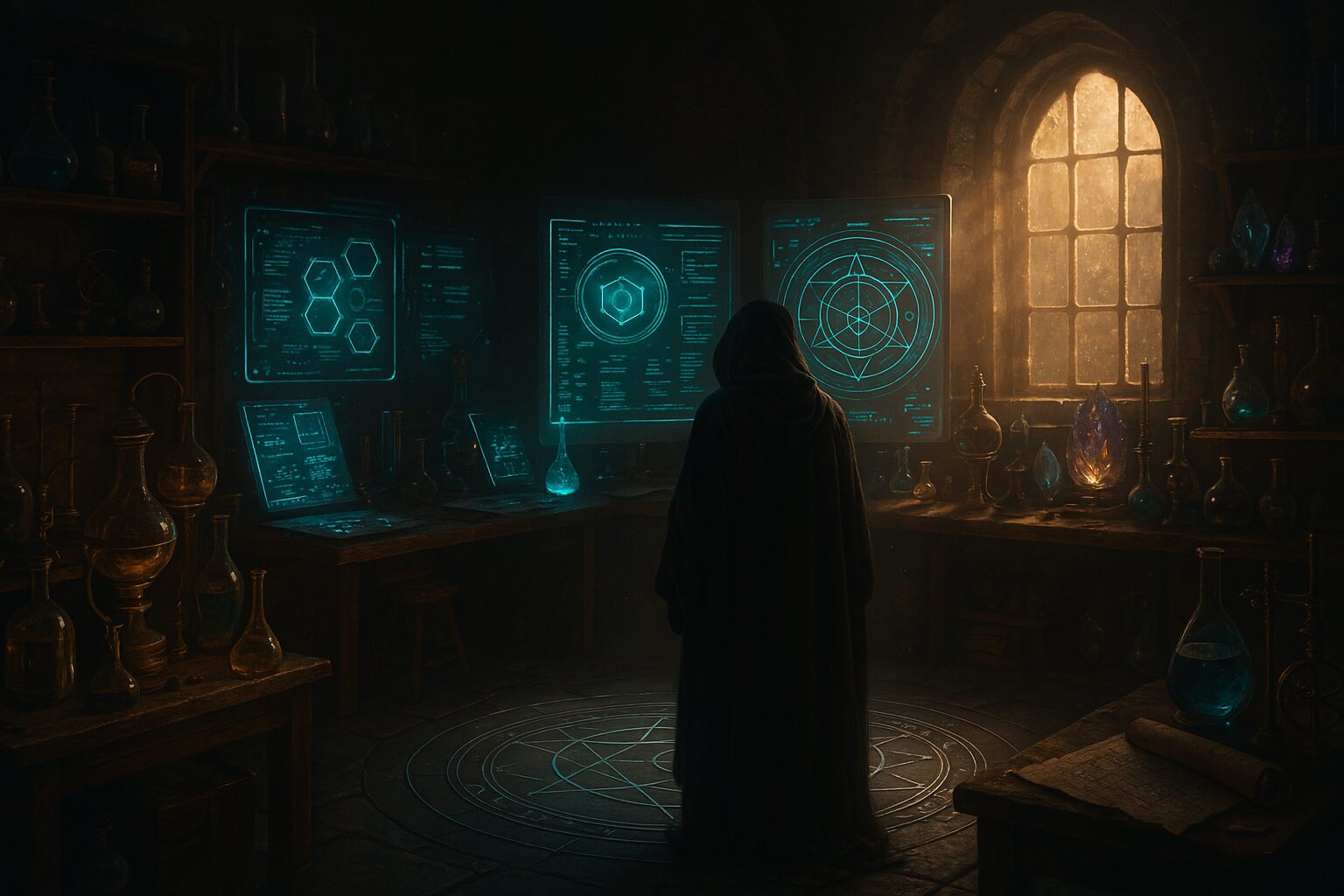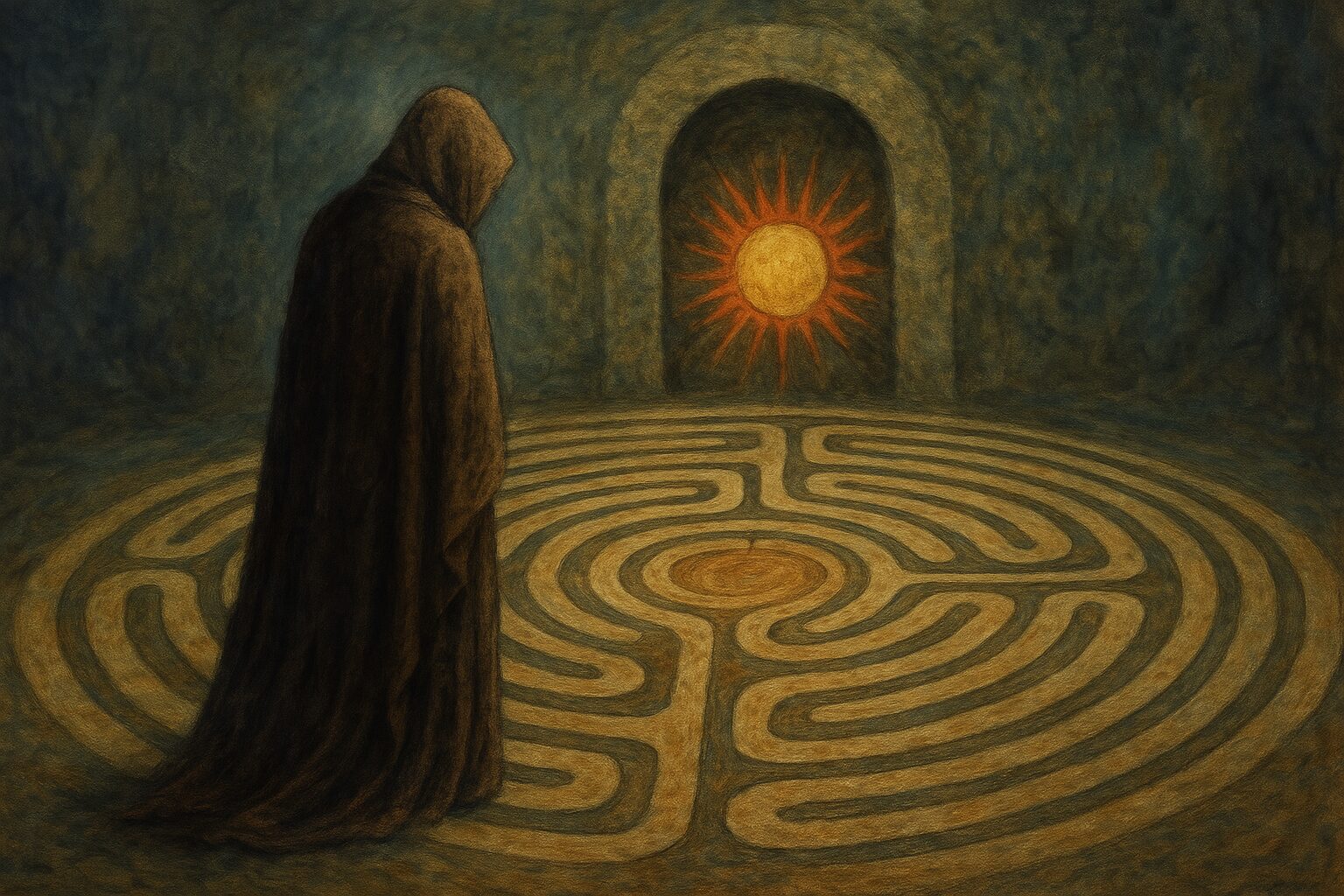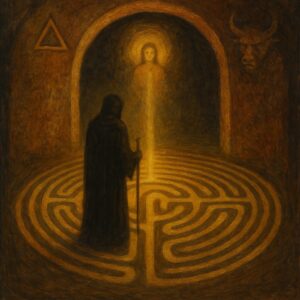“As above, so below; as within, so without.”
— The Emerald Tablet of Hermes
Introduction: Alchemy as the Journey Within
The journey of self-transformation is one of the most profound spiritual undertakings an individual can embark upon. Throughout history, alchemy has symbolized this transformation—not merely the turning of base metals into gold, but an inner, spiritual refinement.
It is said that true alchemy is not performed in laboratories but in the depths of the soul. Through a process of inner purification, the alchemist seeks to awaken their highest potential and return to their divine nature.
The Hermetic tradition, encapsulated in the maxim “As above, so below,” reminds us that what happens on the macrocosmic scale is mirrored in the microcosm of the self.
Hermetic Wisdom: The Inner Mirrors the Outer
In Hermetic texts—particularly in the Emerald Tablet—this principle reveals the interconnection between the material and spiritual realms. The alchemist knows that by perfecting the self, they also participate in transforming the world.
This transformation is not simple or linear. It unfolds through a profound cycle of refinement, mirroring the stages of personal and spiritual growth.
The Stages of Alchemical Refinement
The alchemical journey, known as the “Great Work” or Opus Magnum, can be divided into several symbolic stages. These represent key phases of self-discovery and inner work:
1. Calcination: The Burning Away of the False Self
Symbol: Fire
Process: Burning away impurities
Inner Meaning: The destruction of the ego
“Separate the earth from the fire, the subtle from the gross, gently and with great ingenuity.”
— Emerald Tablet
This stage is about dismantling the ego—our false self tied to materialism, pride, and illusions. Carl Jung describes this as the necessary death of the ego for the true self to emerge.
2. Dissolution: The Breaking Down of Old Structures
Symbol: Water
Process: Dissolving matter in solvent
Inner Meaning: Letting go of limiting beliefs and attachments
This stage signifies the emotional release and surrender of outdated patterns. It often mirrors what mystics call the “dark night of the soul.”
“The soul must traverse a period of spiritual desolation in order to be purified.”
— St. John of the Cross, Dark Night of the Soul
Here, one confronts inner darkness and begins to shed illusions and false identities.
3. Coagulation: The Rebirth of the True Self
Symbol: Earth & Union
Process: Reformation into a new structure
Inner Meaning: Spiritual rebirth and integration
Coagulation represents the formation of the Philosopher’s Stone—a symbol of divine union, enlightenment, and immortality. It is the integration of opposites within.
“Becomes one with the divine substance, and all things become one within him.”
— Corpus Hermeticum
The Kybalion speaks of the unification of masculine and feminine energies, reflecting the inner harmony required for this stage.
The Modern Alchemist: Living the Great Work
Though ancient alchemy was once a physical science, its true legacy lies in the symbolic and spiritual transformation of the self.
Modern mystics and seekers are today’s alchemists, transmuting the “lead” of ignorance into the “gold” of self-realization through:
- Meditation
- Mindfulness
- Contemplation
- Rituals and sacred practices
By applying Hermetic wisdom—especially from texts like the Emerald Tablet—we align our inner world with the divine order.
Conclusion: The Gold of Spiritual Mastery
Alchemy teaches that the real treasure is not material but inner gold—the refined soul.
“It is accomplished, and the work is done.”
— Emerald Tablet
As we walk the path of the Great Work, we transform:
- From ignorance to wisdom
- From ego to essence
- From fragmentation to wholeness
This is the ever-unfolding work of the soul—eternal, dynamic, and sacred.








